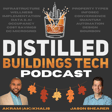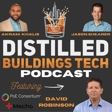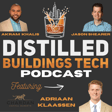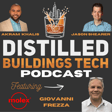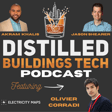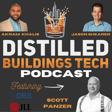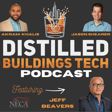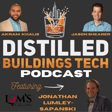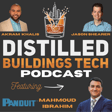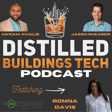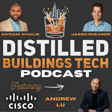
How Technology Converts Space into Profit with Erin McDannald
🔥 Episode Summary
In this episode, hosts Jason Shearer and Akram “AK” Khalis talk with Erin McDannald, multi-time CEO and founder of Elevated, about the intersection of human health, smart building design, and measurable environmental wellness.
Erin shares her personal journey from interior design to lighting to smart building technology—and how her experience as a mother navigating her daughter’s neuroinflammatory health challenges inspired a radical approach to workplace design.
She walks us through her company’s “living lab,” using CO₂ levels, light temperature, and even sound decibels as real-time indicators of wellness, productivity, and cognitive performance in the workplace.
This conversation is a masterclass in building smarter, healthier, and more human-centric environments.
🛠️ Topics Covered
- Erin’s path from lighting to founding a digital building company
- How her daughter’s health shaped her mission for wellness in built environments
- What happens to health metrics when people return to work in a poorly ventilated space
- Why CO₂, color temperature, and sound are the new pillars of workplace productivity
- How real-time environmental data led to a 40% drop in insurance claims and $140K decrease in premiums
- Tuning lighting for calm and critical thinking instead of productivity pressure
- The business case for de-densification and rethinking compressed office footprints
- Using data and automation to shape better collaboration, movement, and wellness
- Building a “healing building” and the vision of a workplace that improves human health
- The role of neuroinflammation and indoor environments in chronic conditions
- Insights on writing her upcoming book and connecting genetic science to smart infrastructure
💡 Favorite Insights
- “We were losing cognitive function at 800 ppm of CO₂. That’s lower than most classrooms.”
- “Decibel levels on a Tuesday tell me if we’re having a good sales week.”
- “We’ve been trying to prove that if you dial in the people and the tech, there’s ROI—and it’s lucrative.”
🥃 This Episode’s Drink
- Erin: Vodka Lemonade (the only thing in the fridge!)
- Jason & AK: Vodka Soda with Lime – perfect for a humid southern summer day
📅 Release Schedule
New episodes drop every other Monday, blending spirits, building science, and bold ideas.
🎧 Who Should Listen?
- CEOs, CIOs, and workplace strategists
- Smart building and wellness consultants
- Real estate developers and property managers
- HR leaders focused on employee experience
- Indoor air quality and sensor technology innovators
📣 Connect & Follow
- Elevated Website: poweredbyelevated.com
- Erin’s Email: erin@lightingenvironments.com
- Find Erin on LinkedIn – she’s actively sharing ideas and engaging with the community
- Subscribe on Apple Podcasts, Spotify, or YouTube
